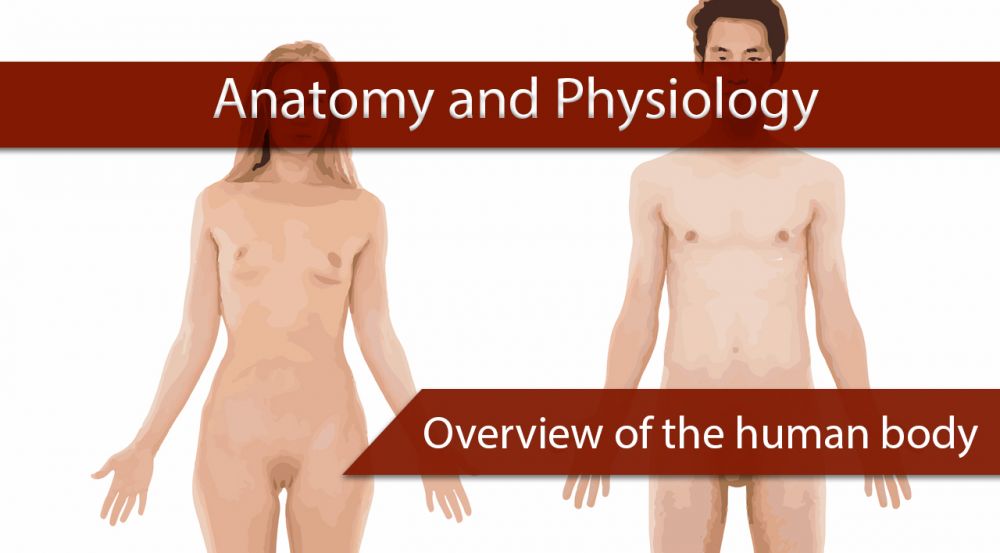Introduction
You might work through this system over several weeks, days or hours, but to enhance your learning and enjoyment make sure you break it up into bite-size chunks.
Here are the sections of the overview of the human body:
As you study the overview of the human body you will learn about:
- Cells of the human body
- Tissues of the human body
- Organs of the human body
- Systems of the human body
Make notes as you study each section, and interact fully with the activities – watch the animations and complete the quizzes.
Take a break at the end of each section– resting your eyes from the computer screen, getting some fresh air or taking a coffee break will improve your ability to focus on your study and take in information.
Give yourself time to think about what you have learned, and time to absorb and understand it.
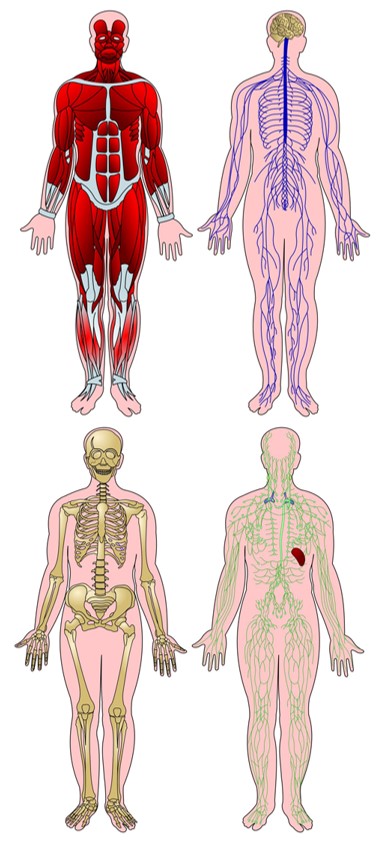
UHI / CC0
The human body
The human body is a single structure made up of billions of cells. These cells are often specialised to form a specific function and appear in large numbers, forming types of tissue.
There are many organs in the human body, such as the heart, lungs, liver and these are made up of several types of tissue that each have a specific function. Together, these cells and tissues enable the organ to function.
These tissues and organs form our body system, each with its own essential functions.
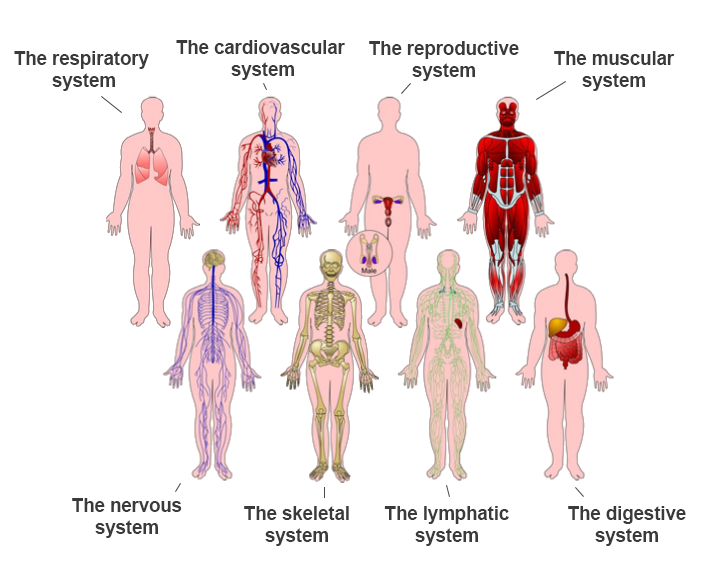
UHI / CC0
The respiratory system
The nervous system
The cardiovascular system
The skeletal system
The reproductive system
The lymphatic system
The muscular system
The digestive system
Cells
The human body is a single structure made up of billions of cells. These cells are often specialized to form a specific function, and appear in large numbers, forming types of tissue.
There are many organs in the human body, such as the heart, lungs and liver, and these are made up of several types of tissue that each have a specific function. Together, these cells and tissues enable the organ to function.
These tissues and organs form our body systems, each with its own essential functions.
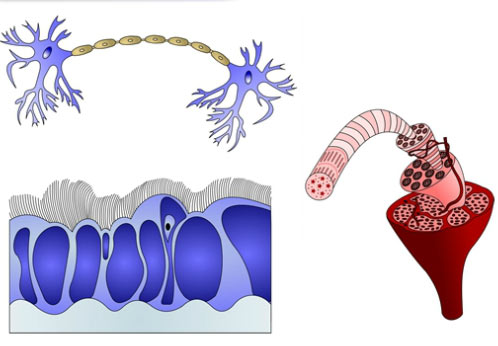
UHI / CC0
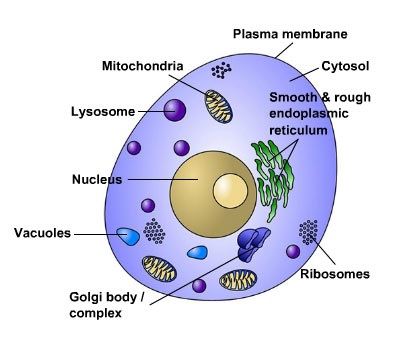
UHI / CC0
Mitochondria
Lysosome
Nucleus
Vacuoles
Golgi body / complex
Plasma membrane
Cytosol
Smooth & rough endoplasmic reticulum
Ribosomes
Tissues
Groups of the same type of cell that co-ordinate their functions towards a particular task are called tissues.
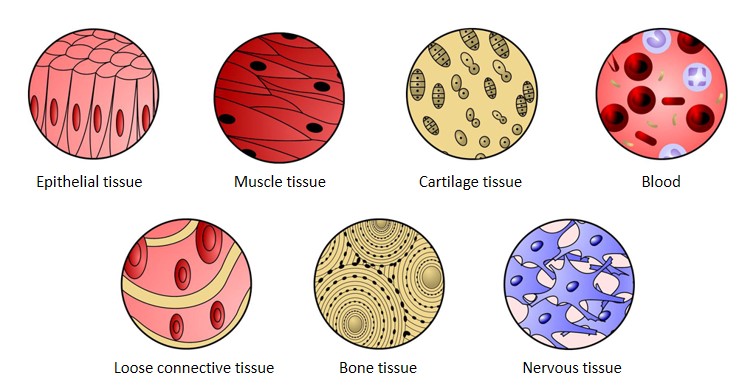
UHI / CC0
Epithelial tissue, Muscle tissue, Cartilage tissue, Blood
Loose connective tissue, Bone tissue, Nervous tissue
All of the tissues in the human body fit into four types:
- Epithelial tissue - lines and covers the body organs
- Connective tissue - connects parts of the body together, acts as padding under skin and elsewhere. Blood is a connective tissue made up of cells in a liquid matrix.
- Muscular tissue - produces movement, made of of fibres that contract.
- Nervous tissue - consists of cells with projections, carries electrical signals around the body
Types of tissues
Connective tissues
Most organs and parts of the body are made up of each different type of tissue, as in the example of the arm shown here.
There are several types of connective tissue. Connective tissue simply joins different parts of the body together, and it occurs as bone, cartilage, blood and loose connective tissue.
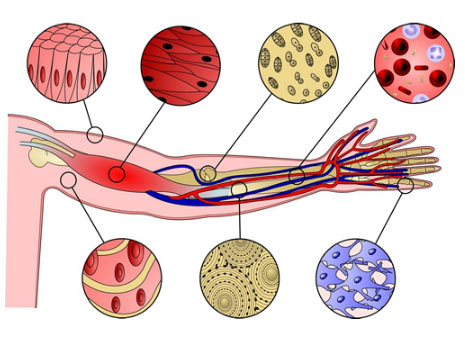
UHI / CC0
Muscle tissue
There are three main types of muscle tissue found in the human body:
- Cardiac tissue
- Smooth muscle tissue
- Skeletal muscle tissue
Cardiac muscle is found in the heart, and although it has some similarities to skeletal muscle, it is a specialised type of muscle tissue. It is striated (striped) and under involuntary control.
Smooth muscle is found in the walls of arteries and veins, in the bronchioles (in the lungs), and in the digestive tract. This is not striped, and is under involuntary control of the autonomic nervous system.
Skeletal muscle is under voluntary control and is striated (striped) in appearance.
All three types of muscle tissue contract (shorten) and bring about movement.
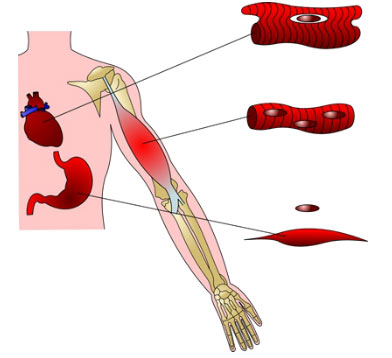
UHI / CC0
Nervous tissue
Nervous tissue is made up of nerve cells (neurons). These lie end to end and pass electro-chemical signals around the body. Some neurones are microscopic but others may have axons of over one metre in length. Bundles of neurons are collectively known as nerves and these are arranged in bundles (tracts) in the central nervous system.
Nervous tissue infiltrates most parts of the body as we need to send information to cells, tissues and organs in order to co-ordinate and manage bodily functions.
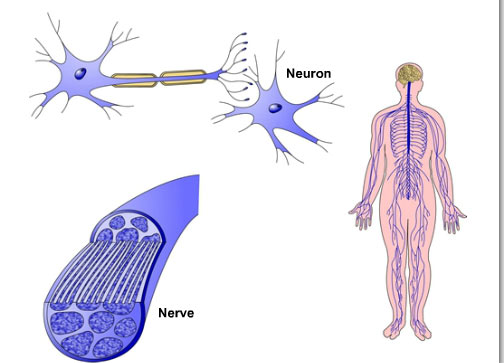
UHI / CC0
Epithelial tissue
Epithelial tissue lines or covers tissues, cells and organs. Each type of tissue has its own specialized type of epithelial tissue – for example muscle fibres are enveloped by the perimysium, bone tissue is covered by a periosteum, and the heart is enveloped by the epicardium.
Many organs also have specialized linings, such as the endocardium in cardiac chambers, or the inner membrane (endosteum) encapsulating the bone marrow cavity in long bones. You will come across many examples of lining and covering tissues as you study the different systems and organs of the human body.
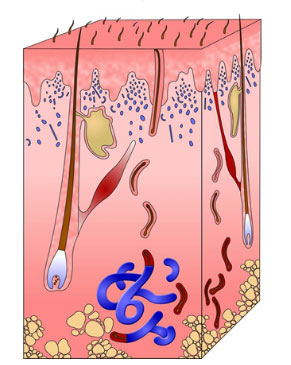
UHI / CC0
Quiz
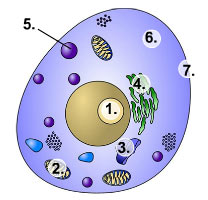
Organs
Organs are made of several different kinds of tissues which function together.
The stomach
For example, the stomach is made up of all tissue types.
Muscle tissue forms part of the stomach wall and helps to churn food around with muscular contractions; nervous tissue is found in the stomach wall and lining and communicates with the brain throughout the process of digestion (how do you know when you feel full?). The gastrointestinal tract is lined with epithelial tissue, and the whole structure is held in place in the abdomen by connective tissue.
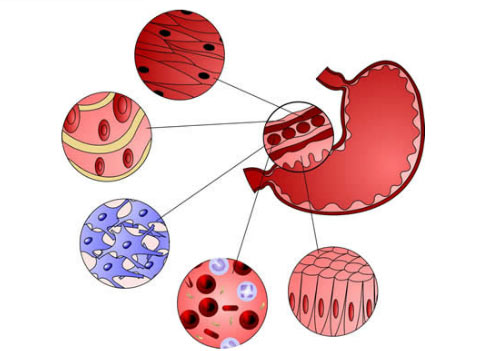
UHI / CC0
The heart
The heart is another example of an organ consisting of all four types of tissue:
Muscle tissue makes up the cardiac heart muscle (myocardium).
Connective tissue is the blood pumping through the heart.
Nervous tissue infiltrates the cardiac tissue to increase or decrease heart rate as required.
Epithelial tissue covers the outside of the heart (epicardium) and lines the cardiac chambers (endocardium).
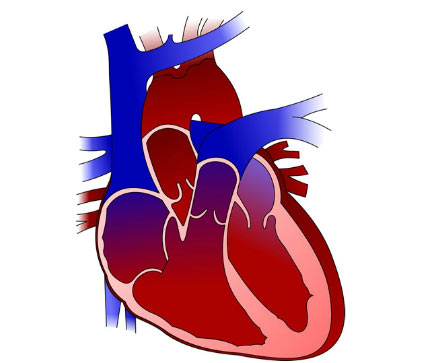
UHI / CC0
Systems
There are 11 main systems in the human body:
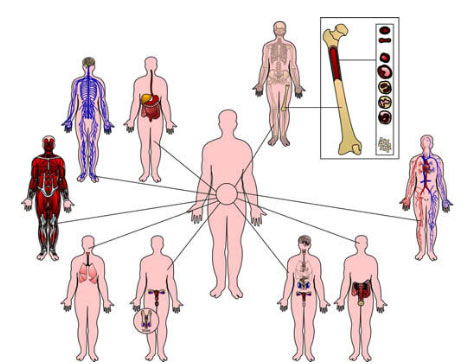
UHI / CC0
Respiratory system
Takes in oxygen and exhales carbon dioxide.
Digestive system
Ingestion and break down of food to provide energy and nutrients.
Cardiovascular system
Transports nutrients and oxygen around the body, and delivers toxins to the excretory organs.
Endocrine system
Controls metabolism and homeostasis through a number of organs and hormones.
Urinary system
Controls fluid balance in the body and excretes waste products.
Reproductive system
Produces hormones which enable reproduction.
Muscular system
Support and movement.
Nervous system
Receives sensory information and sends information on to the rest of the body.
Skeletal system
Support and movement.
Immune system
Provides protection from foreign bodies and microbes.
Integumentary System
Protects internal organs, aids in temperature control and secretes toxins.
Systems quiz
Complete the table below and click on the submit button to check your answers.
| Organ | System |
|---|---|
| Lungs | |
| Muscle | |
| Testes | |
| Brain | |
| Stomach and intestines | |
| Arm bones |
Summary
You have completed your study of the overview of the human body.
You should now have a good knowledge and understanding of the anatomy and physiology of the Overview of the Human Body. You should be able to...
- Identify the main cell organelles
- Explain what a cell, a tissue and an organ are
- Recognise the main types of tissue
- Recognise the main organs of the human body
- Know the systems of the human body
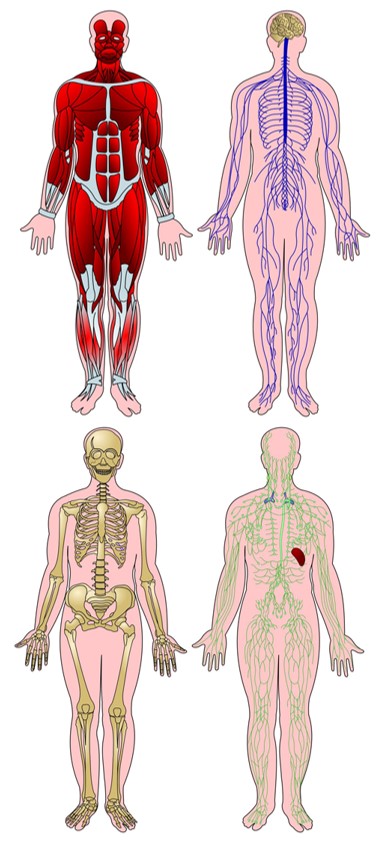
UHI / CC0
